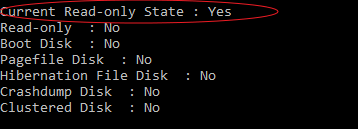Featured Articles
- 01 The Disk Is Write Protected
- 02 How to Remove Write Protection from SD Card
- 03 How to Format Write Protected Pen Drive
- 04 Remove Write Protection and Format Write Protected SSD
- 05 Write Protection Removal Tool/Software
- 06 Troubleshooting 1: SD Card Read Only Fix
- 07 Troubleshooting 2: USB Current Read-only State Yes
- 08 Troubleshooting 3: The Media Is Write-Protected
- 09 How to Remove Write Protection from Pen Drive
- 10 Toshiba USB Flash Drive Write Protected Removal/Format Solutions
- How to fix current read only state yes?
- The "Current Read Only State: Yes" error means your storage device (such as a USB drive or SD card) is in read-only mode, and you can only read files on it, with no rights to modify or add new files to it. This issue often occurs due to software settings, hardware switches, file system issues, and improper removal of the device from the computer.
- Here are the methods you can apply to fix the 'current read-only state with yes' error are:
![current read-only state yes]()
- 1️⃣Turn off the physical switch
- 2️⃣ Use device formatted and write-protection removal tool
- 3️⃣ Run DiskPart to clear the read-only state
- 4️⃣ Change Registry key in Registry Editor
- Fixing this error is basically safe with your data. However, if you noticed data loss or missing data after getting rid of the read-only error, turn to a reliable data recovery tool for help.
What Is the Current Read-Only State Yes Error?
The Current Read-only State Yes error has a typical symptom that you can access and view files, but you can neither create new files, delete existing ones, nor make changes to the content on a storage device. This error often occurs with removable storage devices, such as external hard drives, USBs, and SD cards. It sometimes also occurs on internal storage devices.
User Cases and Symptoms
Here are two user cases, and if you are experiencing a similar issue or symptoms on your drive, follow the tutorial guide below to get rid of this issue.
| Symptom 1. USB Read-only | Symptom 2. SD Card Read-only |
|---|---|
| User Case 1 from Reddit: USB drive "Read only state: yes" and "Read only: no", and "disk is write protected". | User Case 1 from Reddit: My SD card suddenly became read-only. I have a Samsung Galaxy S10 with a 128GB microSD card. I updated the OS from One UI 3 to One UI 4 today, and after the update, I can no longer write to my SD card. I try to record a video with the Camera app, it crashes and says "recording failed"...won't let me write to the SD card either. I also can't delete any files on the SD card... |
| User Case 2 from Microsoft: My "Current Read-Only State" is ON, but the "Read-only" is OFF. Help? I've tried everything in my power to get rid of the write-protection off of my USB that I just got. | User Case 2: "Does anyone know how to unlock a micro SD card? I have many photos saved on my old Android phone card, but I cannot access it as it shows as read-only on my computer. How do I remove a current state from read-only?" |
In the following, EaseUS will help you fix this issue, making the device work normally again and helping to protect your device from becoming read-only again. Share this resolution tutorial online to help more of your friends get rid of the "Current read-only state yes" error from their devices:
You may also be interested in: 1. Fix External Hard Drive Read-Only Error on Mac; 2. Android SD Card Mounted as Read-Only;
4 Solutions to Current Read-Only State Yes
According to many ordinary users, they don't know what the 'current read-only state yes' error is and how this issue occurred. What's more, none of them know how to remove the current read-only state of " yes to no on a hard drive, USB flash drive, SD card, etc. devices.
Here we found four best ways, which are given from easy to complex, for you to follow and get rid of this issue from your device efficiently without losing any data:
- #1. Check and Turn Off the Physical Switch
- #2. Drive Formatter & Write-protection Removal Tool
- #3. Open Regedit and Change Registry Key
- #4. Clear Read-Only State Yes via Diskpart
Let's start removing the current read-only state yes to no on your USB, SD card, or external or internal hard drive now.
Solution 1. Check and Turn Off the Physical Switch
Not all flash disks or thumb drives have a lock switch. So, first, have a check.
Step 1. Take out your stick and check if there is a physical lock switch on the side of it.
Step 2. If there is a lock switch, slide the switch to the unlock side.
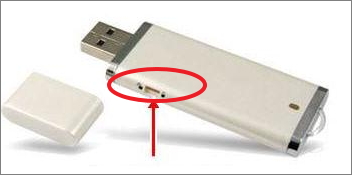
Step 3. Now, connect your USB or SD card to your computer and check if it's accessible.
If it shows as read-only on your computer, try the following methods to make your device and data usable again.
Solution 2. Format Drive/Disable Read-only via EaseUS Partition Master
Note that many reasons would cause your disk to be in a current read-only state, for example, device corruption or file system error, virus infection, etc.
Option 1. Format the Read-only Device
So, you can try to download the EaseUS Partition Master Professional to format a corrupted flash drive and memory card, resetting the device to usable again from the 'current read-only state yes' issue on SanDisk, Kingston, and other brands.
It allows you to:
- Format External/Internal Hard Drive to NTFS
- Format USB, SD Card to FAT32 (Smaller than 32GB), exFAT (Larger than 64GB)
Before you format the device, remember to back up all valuable data to another secure location in advance. Let's start with the following steps:
- Right-click the external drive or USB you intend to format and choose "Format".
- Set the Partition label, File system (NTFS/FAT32/EXT2/EXT3/EXT4/exFAT), and Cluster size if you intend to change. Then click "OK".
- Click "Yes" to continue.
- Click the "Execute 1 Task(s)" button and click "Apply" to format your selected external hard drive or USB stick.
Option 2. Remove the Write Protection
Alongside formatting read-only devices with corrupted file systems, EaseUS Partition Master also works to help you unlock and remove write-protection from USB and SD cards with its Write-Protection removal feature.
Step 1. Download and install EaseUS Partition Master, go to the Toolkit section, and click "Write Protection".
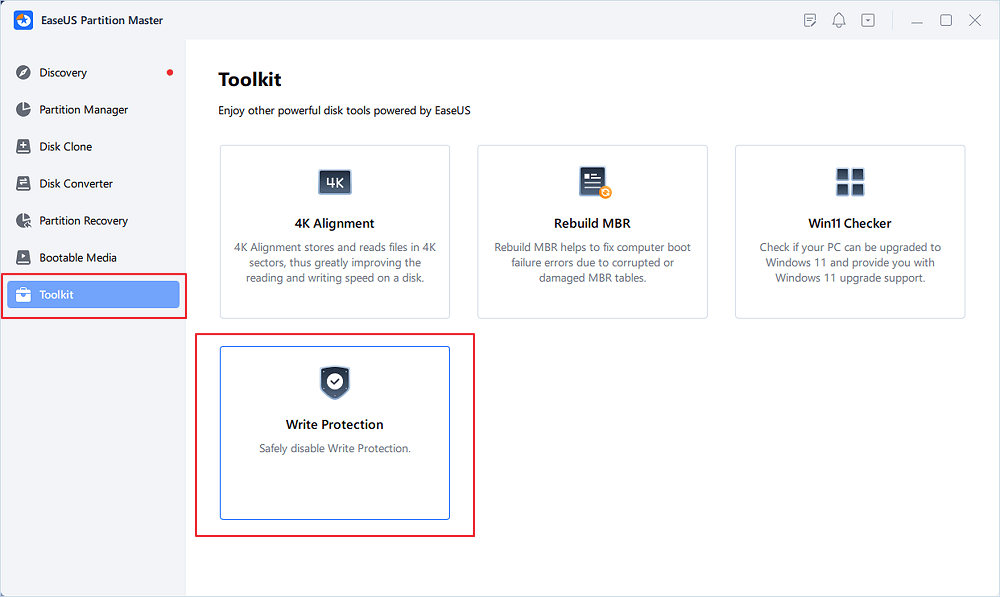
Step 2. Select your write protected USB, USB external disk or SD card, and click "Disable".
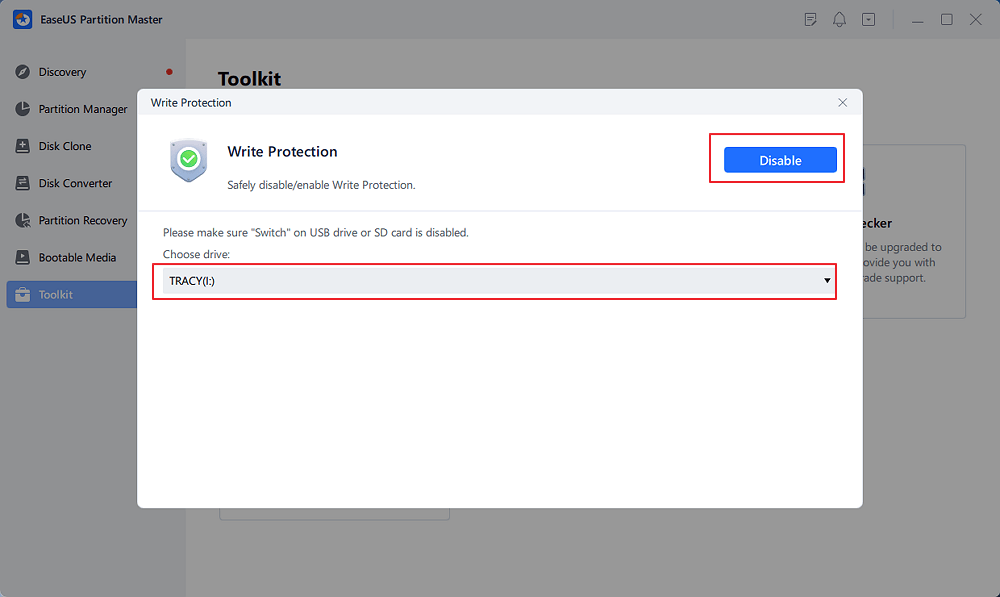
If you think this passage is helpful for the current read-only state on USB, click the button below to share it with people in need!
Solution 3. Open Regedit and Change Registry Key
If you find no switch on the flash disk, you may use the Registry Editor to unlock your device, removing the write protection. This way is somehow harder and needs to be done carefully.
Here is how to do it:
Step 1. Connect the read-only USB flash drive to a Windows PC correctly.
Step 2. Press the Windows + R keys at the same time to open the Run box. Type regedit and click "OK".
Step 3. Now, you've opened the "Registry Editor" and navigated to this path: HKEY_LOCAL_MACHINE\SYSTEM\CurrentControlSet\Control\StorageDevicePolicies.
Step 4. Click the "write Protection" icon, and set the "Value data" to 0. Click "OK".
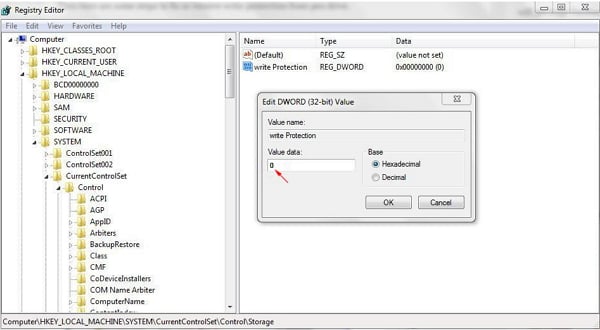
Step 5. Close Registry Editor, and recheck your files on the USB or external device.
Solution 4. Clear Read-Only State Yes via Diskpart Command
The last effective method that you can try is to run the Diskpart command as an administrator to get rid of the 'Read-Only State Yes' error from your storage devices.
Here are the steps:
Step 1. Restart the PC, click your username icon, and select to log in as "Administrator."
Step 2. Connect your read-only or locked device to your computer if it's an external storage device.
Step 3. Type cmd in the Windows Search box, right-click Command Prompt, and select "Run as Administrator."
Step 4. Type diskpart and hit Enter.
Step 5. Type the following commands and hit Enter each time to clear the read-only state from your device:
- list disk
- select disk 2(Replace 2 with the disk number of your problematic drive.)
- attributes disk clear readonly
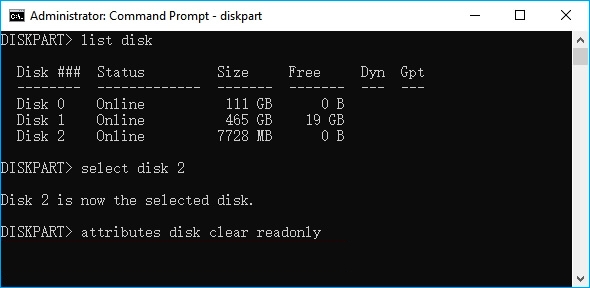
Step 6. Type exit to close Diskpart when the process is complete.
After trying the above four solutions, your storage devices should be accessible and available for modification again.
Why Do Devices Become Read-Only? How to Prevent It?
The 'current read-only state yes' error is used to describe the state of your current device, which is write-protected. With this issue, you can neither save new files nor use the saved data on the device. It is commonly seen in removable storage devices of many big brands, such as SanDisk, Transcend, Kingston, and so on.
So why is your device read-only? The following issues cause it:
- The hardware physical switch is locked.
- Your device is write-protected due to software settings.
- The registry key is set to be a write-protection number.
- File system error trigger read-only protection
Here, we also find some tips that you can follow to prevent and protect your storage devices from becoming read-only:
- 1. Create an extra backup of valuable files to another secure location
- 2. Clear viruses regularly on your computer
- 3. Don't encrypt the drive regularly
- 4. Eject and unplug your device properly
- 5. Setting a Windows-compatible file system on your device
The Bottom Line
On this page, we explained the "Current Read-only State Yes" error and how this error happens to your storage devices. To fix this issue, we collected four useful tools to help you, including changing the physical switch side, changing the Registry key number, using a write-protection removal tool, and running the Diskpart command to remove the Read-only yes state.
In order to make your device 100% secure for saving files again, we also suggest you format and reset the device to NTFS (for external and internal hard drives), FAT32, or exFAT (for USB and SD cards) with the help of EaseUS partition manager software.
FAQs of Current Read-Only State Yes
If you have further questions about the Current read-only state yes error, check the following listed questions and you may have a chance to find the desired answer here.
1. How to remove current read-only state yes on NVMe SSD?
When an SSD, such as NVMe SSD, gets read-only mode, there are two quick options for users to try.
- Advanced users: directly run DiskPart with the attributes disk clear readonly command to trigger the yes state to no.
- Beginners: turn to a third-party write-protection removal tool such as EaseUS Partition Master for help. It's easier and more efficient.
2. Is there an easier way to fix current read-only state yes than using DiskPart?
Compared to the DiskPart command line, utilizing a third-party write protection software or tool with a user-friendly interface is easier and more efficient for the average users to run and clear read-only mode from their storage devices.
Was This Page Helpful?
Updated by Tracy King
Tracy became a member of the EaseUS content team in 2013. Being a technical writer for over 10 years, she is enthusiastic about sharing tips to assist readers in resolving complex issues in disk management, file transfer, PC & Mac performance optimization, etc., like an expert.
Jean is recognized as one of the most professional writers in EaseUS. She has kept improving her writing skills over the past 10 years and helped millions of her readers solve their tech problems on PC, Mac, and iOS devices.
Related Articles
-
Back Up Bitlocker Recovery Key before Updating this Version BIOS | Why & How
![author icon]() Shelly/Sep 28, 2025
Shelly/Sep 28, 2025 -
Windows 10/11 Multiple Recovery Partitions? How to Repair 💡
![author icon]() Sherly/Sep 28, 2025
Sherly/Sep 28, 2025 -
How Do I Install a Second Hard Drive? Here Is the Complete Guide
![author icon]() Tracy King/Oct 26, 2025
Tracy King/Oct 26, 2025 -
How Do I Run External SSD Speed Test on My Own? Your Guide Is Here
![author icon]() Tracy King/Sep 28, 2025
Tracy King/Sep 28, 2025
